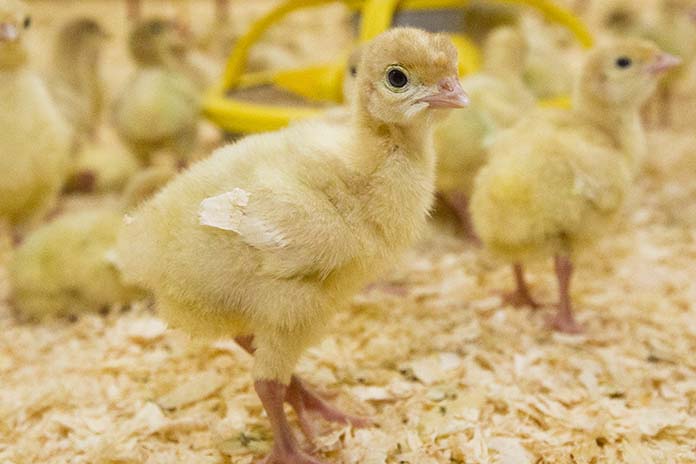
Clostridial Dermatitis is a disease of economic concern in turkeys. Clostridium perfringens and Clostridium septicum have been isolated consistently from dermatitis lesions in turkeys. Disease pathogenesis for Clostridial Dermatits (CD) is inadequately understood.
There is very little information as to how exactly these bacteria gain access and play a role in producing dermatitis lesions in turkeys in light of their (CP / CS) presence in most of the turkey growing environments. Our long-term goal is to understand the underlying causes and or potential risk factors that may contribute to the development of CD in turkeys.
The purpose of this study was to evaluate the effect of dermal scratch to facilitate Clostridial infection and causation of dermatitis in turkeys. A total of seventy-two (9 weeks) old Nicholas turkeys were used.
Birds were tagged and divided in 2 groups i.e., Scratched and unscratched. Each group was further divided into 3 subgroups. Litter was sprayed with Clostridium perfringens in Room 1 and 4, Clostridium septicum in Room 2 and 5 and Normal Saline in Room 3 and 6. Scratches were made with the help of 0.5-inch, 18-gauge needle to create two parallel lesions 2 to 3 cm in length on the anterior region of the ventral surface parallel to the keel. Blood from each bird was collected on Day 0, 14 and 28.
Two birds from all subgroups were necropsied on 7 and 21 days of treatment and tissues were collected. Remaining birds were euthanized on Day 28 in CO2 chamber. Rectal swabs, Litter samples and fresh droppings were collected on Day 0, 7, 14 and 28 and analyzed for Clostridial load by Q-RT PCR. Experiment 1 has been completed and analysis of samples collected is in progress.
Initial results of this experiment appear to indicate that subcutaneous injuries promote the development of dermatitis lesions from C. septicum and/or C. perfringens from bedding material. The sequential development of lesions post exposure to CP/CS with cutaneous injuries.
Source: 2018 AAAP Proceedings